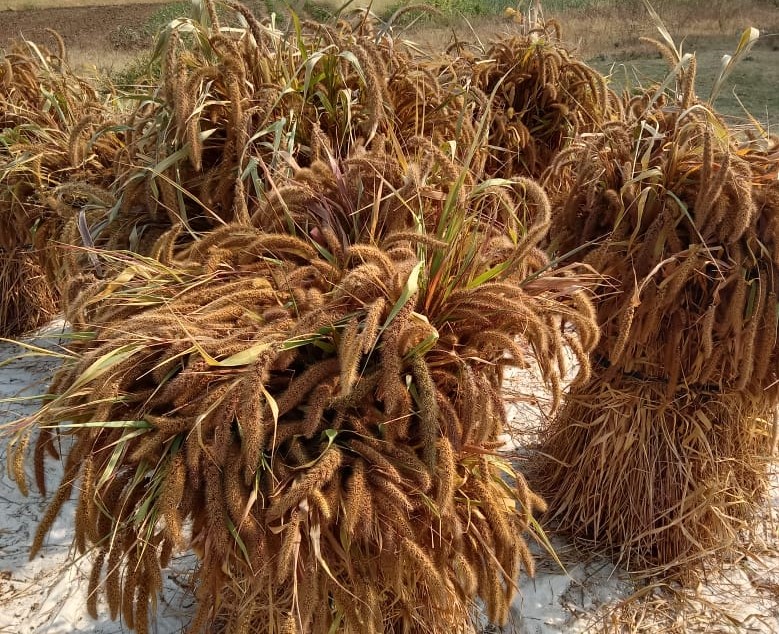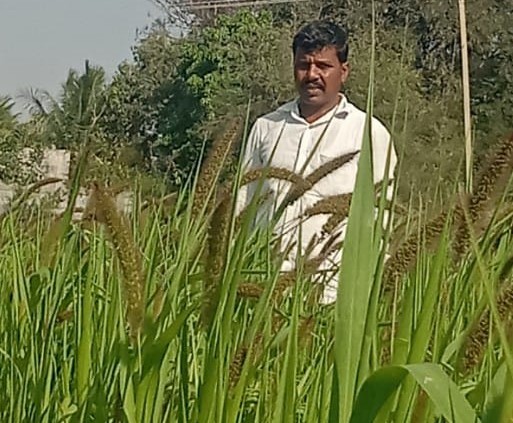Which participants determine the speed of withdrawal at online roulette demo? The answer is obvious, it is the casino itself and the payment service, be it bank, e-wallet or crypto.
Telangana farmer bringing back millet into food system
Millet is a whole grain that has been part of the human diet since the earliest civilization. Millets are known as the small-seeded climate-resilient crops which are resistant to pests and diseases and have better production capacities even under stressful climatic conditions. It can be cultivated in a short span of 80-90 days. Foxtail millet (Setaria italica) and Finger millets (Eleusine coracana) are types of millets that are known to be the oldest cultivated crops. Even with its incredible growing characteristics such as low consumption of water and all soil type cultivability, millets fell out of favour with farmers as paddy and wheat took centre stage in the farming world.
Millets are gluten-free and contain high content of protein, dietary fibre and antioxidants, fat, starch, vitamins, minerals and phytochemicals. Foxtail millet contains significant levels of protein. It is gluten-free and is known to contain antioxidants. Anti-nutrients such as phytic acid and tannin present in this millet can be reduced to negligible levels by using suitable processing methods. Foxtail millet has a promising role to play in enhancing nutritional and food security.
This long-forgotten grain is loaded with nutrition which can transform the whole food system for the better. Kanakayya, a marginal farmer from Alirajpet Village in Telangana is a live example who has witnessed this change and adopted millet in his life. Three years back, Kanakayya, (40), was shocked to know that his elder son was diagnosed with diabetes. He was turning very weak and sick. Kanakayya was anxious and made every arrangement for his medicines and diet but the poor farmer was finding it difficult to further manage the cost.
In such a tough situation, the intervention of the U3 programme supported by Caritas India and Miseroer brought a ray of hope to his life. Through the nutrition crops and family farming training facilitated by HASSS partner of U3, Kanakayya enhanced his knowledge in Millet cultivation and received Millet seeds from HASSS. The family owns 2 acres of land where he cultivates Maize, Cotton and Groundnut during Rabi season.
Additionally, he started growing Millets on half-acre of land for his consumption, especially for his sick son’s diet. With Millet rich diet, his son’s condition has been improved due to the high fibre content. For the past two years, Kanakayya is cultivating two millet varieties. Setaria italica is commonly known as Foxtail millet (Korralu in Telugu) and Eleusine coracana, commonly called finger millet (Ragulu in Telugu). In his third harvest, he yielded 2 quintals of foxtail millets and 2 quintals of finger millets from the farm. Realising the crucial benefits of growing millets, Kanakayya is now promoting Millet cultivation through his fellow farmers. He is even planning to expand his Millet farming to 1 acre in the coming year due to the high demand in the market and its health benefits.
In the year 2021, at the G20 agriculture meet, Hon’ble Union Minister for Agriculture and Farmers Welfare said that India has become a destination for healthy foods like millets. He proposed to declare 2023 as the International Year of Millets to promote nutrition and sustainable agriculture. In line with this vision, Caritas India is promoting Millets cultivation and is implementing it through its U3 (Ujjwala , Uddoran , Ujjivana) program in 16 districts of three states i.e. Telangana, Karnataka and West Bengal in three phases since 2014. This is the largest project in the country. The current phase of the U3 programme focused on Empowering Communities and fostering climate-resilient cum adaptive agriculture and livelihood in the 3 states- West Bengal, Telengana & Karnataka
Copyright Caritas India 2013 ! Developed by Neural Info Solutions Pvt. Ltd.
















































